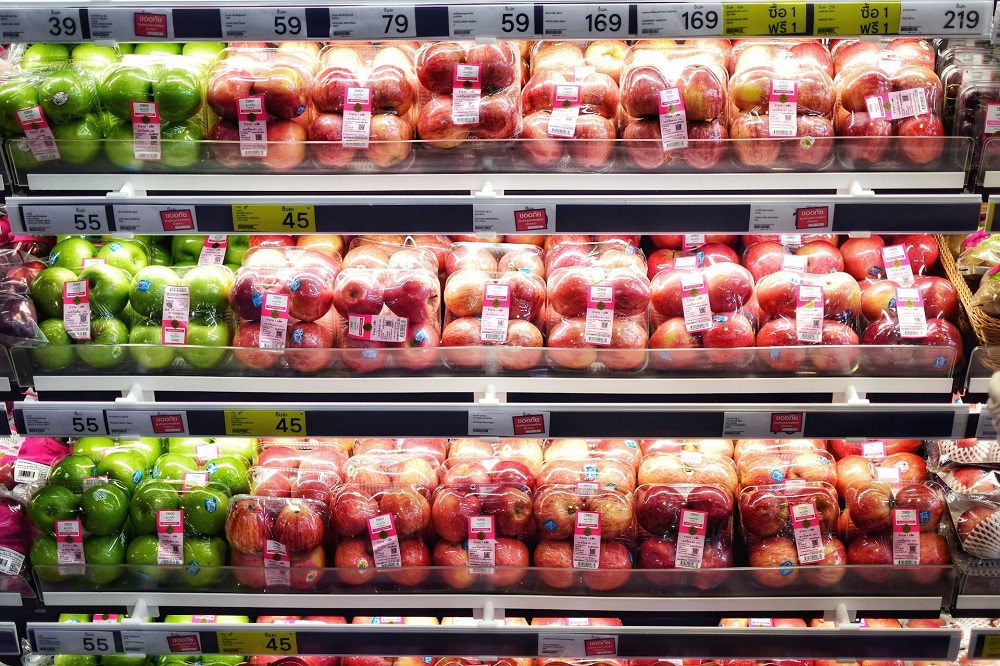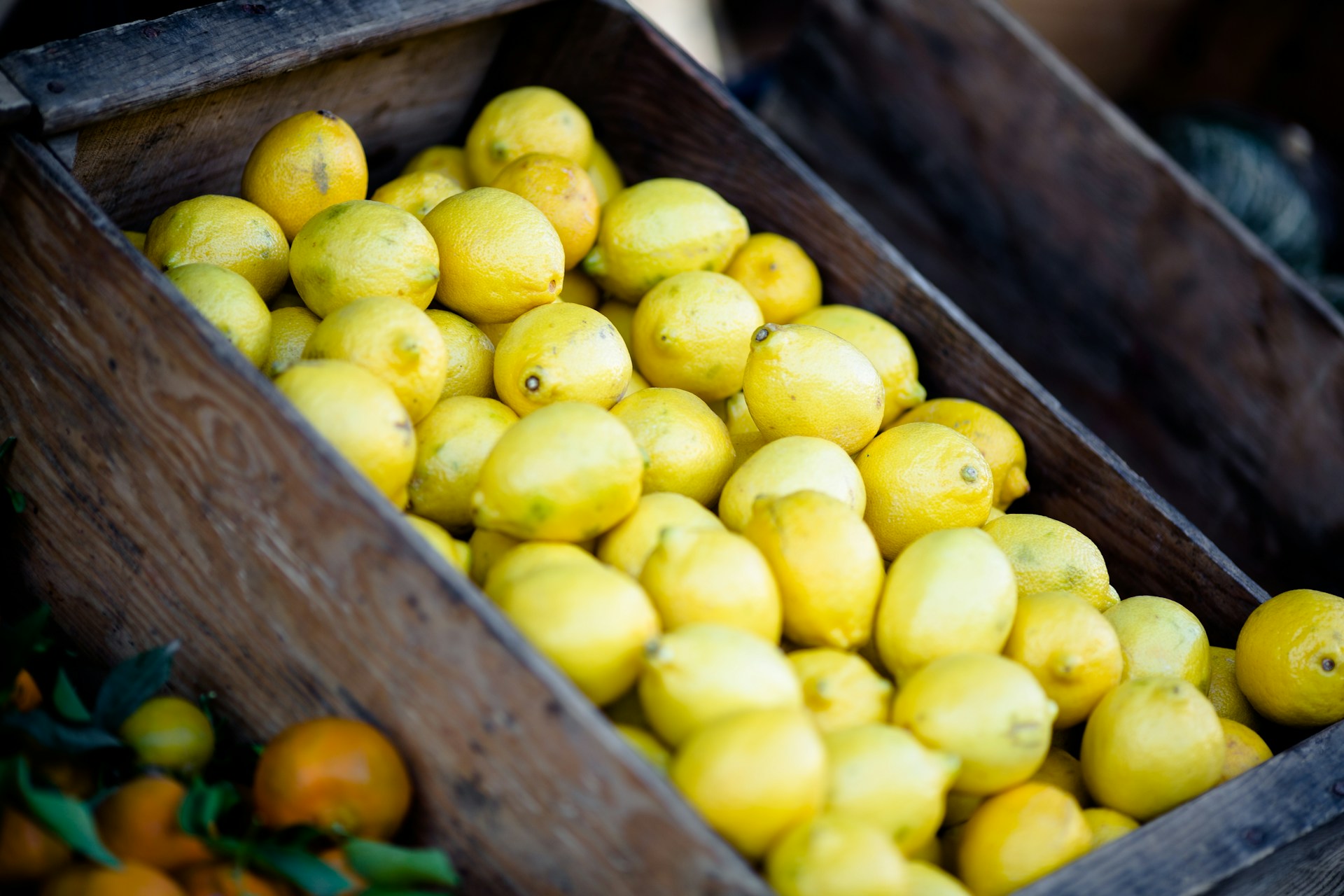As the global demand for fresh produce continues unabated, the spotlight on safety measures has never been brighter.
Ensuring the health of consumers is paramount to the success of any food and beverage company.
The landscape of food safety has significantly evolved in recent past, with technology introducing innovative approaches in produce processing.
New techniques and software have emerged, facilitating more rigorous controls and enhanced system efficiency.
This pressing quest for maximal food safety does not just mitigate risks; it instills consumer trust.
The role of these technological advancements can’t be understated as they redefine the approach to safeguarding public health.
Contents
- Advances In Safety Technology For Produce Processing
- 1. Improved Pathogen Detection Through Rapid Testing Kits
- 2. Application of pulsed light technology for sanitation
- 3. Use of Ozone Technology for Sterilization
- 4. Automated Monitoring Systems for Safety Procedures
- 5. Algorithm-based Temperature Control Techniques
- 6. Advanced robotics for contamination-free handling.
- 7. High-pressure Processing for Bacterial Inactivation
- The Bottom Line
Advances In Safety Technology For Produce Processing
1. Improved Pathogen Detection Through Rapid Testing Kits
In the realm of food safety, one of the most significant advancements has been the development and widespread adoption of improved pathogen detection through rapid testing kits.
These kits have revolutionized the produce processing industry, substantially cutting down detection times.
Previously, detecting pathogens in produce would take days, even up to a week, but with these technology-based testing kits, detection can occur within hours.
Essentially, this means the potential for an outbreak of a food-related illness is identified and contained much more swiftly than ever before.
Faster detection is not just beneficial for public health – it’s also extremely beneficial for businesses in the produce processing industry.
The faster a potential contamination can be identified and dealt with, the less waste there will be, and the more trust consumers will have in a brand’s commitment to safety.
Improved pathogen detection doesn’t just mean faster results, it also means more accurate results.
Thanks to scientific advancements and more sophisticated technology, these rapid testing kits can identify specific pathogens, not just generic bacteria.
This level of specificity is crucial, as different pathogens require different food safety responses.
This is particularly useful when it comes to recalls, as knowing exactly what pathogen is present can help identify the source and limit the spread of the bacteria.
Improved pathogen detection is also playing a crucial role in the prevention of foodborne illnesses.
Because these kits can directly detect harmful bacteria in real-time, they add an extra line of defense against pathogen spread and future outbreaks.
This extra level of protection is particularly important in light of increasing global trade, which significantly increases the risk of foodborne disease spread.
This is also important for public health as a whole since rapid detection of pathogens leads to faster responses, limiting the number of people exposed, and potentially saving countless lives.
As technology continues to advance, there will no doubt be further improvements in pathogen detection.
Already, some companies are developing testing kits that can be used on the go, providing real-time, instant results.
These sorts of advancements are further enhancing food safety, ensuring that produce is safe to consume from the moment it’s harvested to the moment it’s eaten.
2. Application of pulsed light technology for sanitation
In the realm of produce processing, the application of advanced technologies plays a crucial role in upholding safety.
Among these technologies, pulsed light technology has emerged as a revolutionary method for sanitation.
Utilizing high-intensity, broad-spectrum light, pulsed light technology delivers a rapid and effective process of sterilization.
Remarkably, it has the capability to destroy 99.9% of harmful microorganisms upon exposure.
This technology reveals a promising vision for safeguarding consumers from foodborne diseases, enhancing the overall safety and quality of produce.
Each pulse applied in this technology is analogous to a flash of lightning, possessing immense energy and temperature.
The energy from each pulse is utilized to rupture the cells of pathogens, leading to their immediate eradication.
The duration of these pulses is typically short, ranging from a few nanoseconds to one millisecond.
Despite the high temperatures involved, the underlying principle of delivering quick, intense pulses ensures the produce remains unscathed.
This non-thermal processing technique obviates the need for traditional methods, which can affect the taste, texture, and nutritional content of the produce.
Pulsed light technology also offers an eco-friendly technique for sanitation, as it substantially reduces the dependency on chemical sanitizers.
Furthermore, it encourages the recycling of waste materials, as the process doesn’t generate any hazardous by-products.
This innovative approach has the potential to transform the face of produce processing by elevating the assurance of food safety to a whole new level.
Overall, the implementation of pulsed light technology in the process of sanitizing produce ensures the delivery of healthier, safer, and premium quality products to consumers.
Thus, it’s evident that the advancements in safety technology, such as pulsed light technology, contribute significantly towards enhancing the safety standards in the realm of produce processing.
3. Use of Ozone Technology for Sterilization
Ozone technology has been widely embraced as one of the advanced and effective sterilization methods in produce processing.
The use of ozone for sterilization is not a new concept; it has been in use for over a hundred years in various industries including water treatment.
In the food processing industry, its efficiency in killing bacteria, viruses, and other pathogens is remarkable.
This is because ozone is a powerful oxidant that can destroy microorganisms chemically by breaching their cell walls.
Ozone technology is a potent tool that assures the sterility of our produce and food products without leaving any harmful residues.
The application of ozone in the food processing industry is quite diverse and caters for a wide range of produce.
Maybe quite interesting is the fact that ozone can be applied in both gaseous and aqueous states.
This makes ozone technology adaptable and versatile for various situations during food production and processing.
In its aqueous state, ozone can be used to sanitize processing surfaces, containers, and other equipment which helps keep the whole environment clean.
In its gaseous form, ozone gas can be used in cold storage rooms to prevent growth of bacteria and molds, which enhances the shelf life of the produce.
This multipurpose utilization speaks volumes of the flexibility and efficiency of ozone technology in maintaining food safety.
Another notable benefit of ozone technology is that it is environmentally friendly.
Unlike other sterilization agents, ozone leaves no harmful residues after its use.
It disintegrates back to pure oxygen, leaving no harmful substances behind that may later contaminate the environment.
Moreover, the use of ozone technology also reduces the need for using chemical additives and preservatives in food processing.
Its potent antibacterial action ensures that food safety is maintained without the need for these potentially harmful additives.
The use of ozone technology in sterilization is indeed a step forward into major improvements in safety technology for produce processing.
4. Automated Monitoring Systems for Safety Procedures
The introduction of automated monitoring systems in produce processing has potentially transformed the industry’s safety standards.
Automated systems improve food safety by precisely controlling and monitoring the critical points in food processing.
Such systems can accurately track the temperature, humidity, and timing of various processes, thereby ensuring every step meets regulatory requirements and safety standards.
This emerging technology offers real-time monitoring and immediate feedback, enabling quick corrective actions and the prevention of potential hazards.
Moreover, human error in safety monitoring can be significantly reduced by these automated systems.
They provide constant surveillance, unlike manual monitoring, which can be subject to lapses.
Automation in safety procedure monitoring is not only limited to temperature and time regulation.
It can also include elements such as contaminant detection and supply chain management.
For instance, some systems track each product’s journey from harvest to distribution, creating a clear supply chain lineage.
Such traceability can be critical for pinpointing any safety issues and facilitating any necessary product recalls.
Automated systems can also be integrated with other technologies in the processing line, further enhancing their utility.
For example, they can be synced with sanitation equipment to monitor cleaning efficiency and initiate cleaning cycles at appropriate intervals.
Also, in situations where the processing environment changes, the systems can adapt swiftly by altering various elements, such as temperature and humidity, to maintain optimal conditions for food safety.
By reducing the complexities of manual monitoring, automated systems have become a necessity in modern food processing plants.
Overall, the application of automated monitoring systems in produce processing has substantial potential for improving the thoroughness, efficiency, and reliability of safety procedures.
5. Algorithm-based Temperature Control Techniques
Temperature control plays a critical role in the safety and quality of produce processing.
The advent of algorithm-based temperature control techniques has significantly improved this aspect.
These algorithms make use of various input data for dynamic temperature regulation.
Real-time adjustments based on these algorithm-based techniques have made the process more efficient and precise, enhancing the overall safety of produce processing.
The algorithms are designed to respond to the unique thermal properties of different produce items, ensuring optimal temperature conditions for each type.
This personalized temperature control helps maintain the freshness and nutritional properties of the produce, while also preventing microbial growth.
They also respond to changes in environment, such as fluctuations in ambient temperature, which might otherwise impact the consistency of the produce processing.
Another benefit of algorithm-based temperature controllers is their compatibility with automated processing systems.
The integration of temperature control algorithms and automated systems increases the synchronization and coordination in the processing line, resulting in an enhanced overall process.
The algorithms can be upgraded and modified according to ongoing research and technological advancements, which ensures the incremental improvement of the process control.
Given the role of temperature in reducing potential hazards in produce processing, these algorithms also have significant implications for ensuring food safety.
Through consistent and accurate temperature regulation, they help in the effective inactivation of pathogens during the processing of fruits and vegetables.
For this reason, the development and implementation of algorithm-based temperature control techniques marks a significant advancement in the realm of safety technology for produce processing.
The adoption of these techniques by food processing factories is becoming increasingly widespread due to their efficiency and reliability.
The digital nature of algorithm-based temperature controllers also makes them easier for regulatory authorities to monitor, facilitating compliance with safety protocols and standards.
Implementing these modifications and adjustments requires a thorough understanding of the algorithm’s functioning, and continuous refinement based on trial and error increases the technical efficiency of the process.
6. Advanced robotics for contamination-free handling.
The utilization of advanced robotics systems in produce processing plants is paving the way towards improved safety standards by drastically reducing the risks of contamination.
These automated machines are programmed to perform handling operations with high precision and zero human intervention, thereby reducing the possibilities of produce getting exposed to biological pathogens.
Advanced Robotics, promising a future of produce processing with precision, reliability and safety, has the ability to eliminate the risk of human-induced contamination.
Advanced robotics modules equipped with high-grade sensors and intelligent processing units are capable of detecting and removing defective or contaminated produce, significantly enhancing the quality of the end product.
One of the key advantages of these robotic systems is their ability to work round-the-clock and perform monotonous tasks repetitively without any fatigue, ensuring consistent quality.
The processes such as peeling, slicing, packaging, and palletizing, notoriously known for having high infection rates, have recorded a substantial decrease in contamination cases following the introduction of robotic technology.
These machines come fitted with high-precision grippers, which handle delicate produce without causing any physical damage, thereby extending the shelf life of the produce.
Advanced robotics technology also offers flexibility as different modules can be programmed to handle different types of produce, thereby adapting to the varying needs of the industry.
The increasing adoption of robotics is also leading to a decrease in processing time, allowing businesses to process more produce in less time, thereby improving productivity and profitability.
Few advanced robotic machines are also incorporating ultraviolet light sanitation systems to sanitize produce while handling, opening up new avenues in maintaining the safety of the produce.
The sophisticated circuits and programming of these robotic machines enable them to work in tightly controlled environments, drastically reducing the risks of cross-contamination.
Moreover, the use of advanced robotics is reducing the need for human workers to operate in potentially hazardous environments, thereby significantly improving workplace safety.
The implementation and maintenance costs of these systems are compensated by boosted production rates and minimized waste, making these tools a viable solution for businesses of all sizes.
Advanced robotics, as an effective instrument, is fundamentally transforming the safety dynamics in the produce processing industry, promising a future where any scope of contamination is eliminated.
Although the adoption rate is slow due to the prolonged return on investment period, the long-term benefits in terms of safety and efficiency make the integration of advanced robotics into produce processing absolutely essential.
7. High-pressure Processing for Bacterial Inactivation
High-pressure processing, or HPP, is a revolutionary technique used in the produce processing industry to inactivate bacteria and other harmful pathogens.
Unlike traditional food preservation methods that depend on heat, HPP uses extreme water pressure to eliminate microbes, effectively maintaining the freshness and nutritional value of food products.
This non-thermal food processing method has emerged as a promising alternative to conventional heat treatments like pasteurization, offering numerous advantages such as enhanced food safety and extended shelf life.
The underlying principle of HPP is that under high pressure, the cellular structure of bacteria and other pathogens are disrupted, leading to their inactivation.
Specifically, HPP applies pressure of about 6000 bars or 60000 atmospheres, an extreme pressure under which most bacterial cells, yeasts, molds, parasites, and viruses are destroyed or considerably incapacitated.
This pressure is about six times the pressure found at the deepest part of the ocean, and is efficiently effective in inactivating a broad range of bacteria, including E.coli, Listeria, and Salmonella, which are commonly found in raw fruits and vegetables.
One of the key benefits of high-pressure processing is that it does not involve the use of any chemicals, making it an environmentally friendly solution and a desirable choice for organic food producers.
Additionally, the ability of HPP to maintain the original taste, texture, and nutritional value of food products sets it apart from other food preservation technologies.
However, there are some limitations to this technology, such as the initial high investment costs and the inability to eliminate bacterial spores.
Consequently, for products susceptible to spore-forming bacteria, HPP must be combined with other preservation mechanisms such as refrigeration or the use of antimicrobial compounds.
Moreover, due to the batch process nature of the technology, it is less suited for high-volume, low-margin products.
Overall, despite some of these challenges, high-pressure processing remains one of the most promising advances in safety technology for produce processing.
As research continues in the field, it is expected that the adoption of HPP in the produce processing sector will significantly increase.
The development of new HPP systems with larger capacities and efficiencies is likely to reduce operating costs and open up new avenues for its application in various food segments.
In the future, this technology has the potential to play a crucial role in ensuring food safety.
The Bottom Line
The continuous advancements in food safety technologies highlight an unerring commitment towards ensuring consumers’ health and wellness.
Rapid testing kits, pulsed light technology, and ozone sterilization present promising strategies for minimizing risk, increasing food safety, and enhancing pathogen detection.
Simultaneously, automated systems enhance procedural accuracy, while algorithm-based temperature control techniques optimize food preservation.
Likewise, advanced robotics eliminates opportunities for contamination during handling, with high-pressure processing presenting a robust solution for bacterial inactivation.
Hence, embracing these novel technologies transforms the food sector into a safety-centric industry, substantially reducing foodborne diseases and fostering greater consumer confidence.




